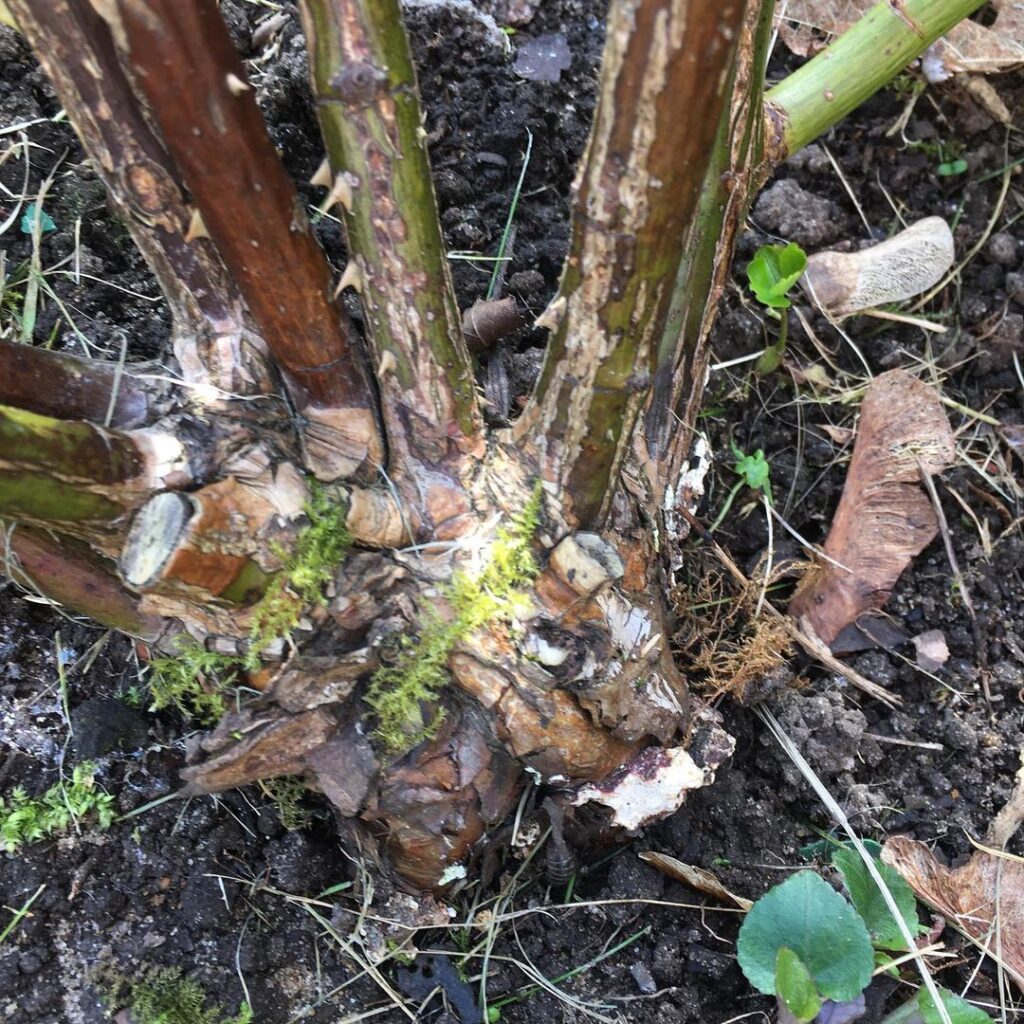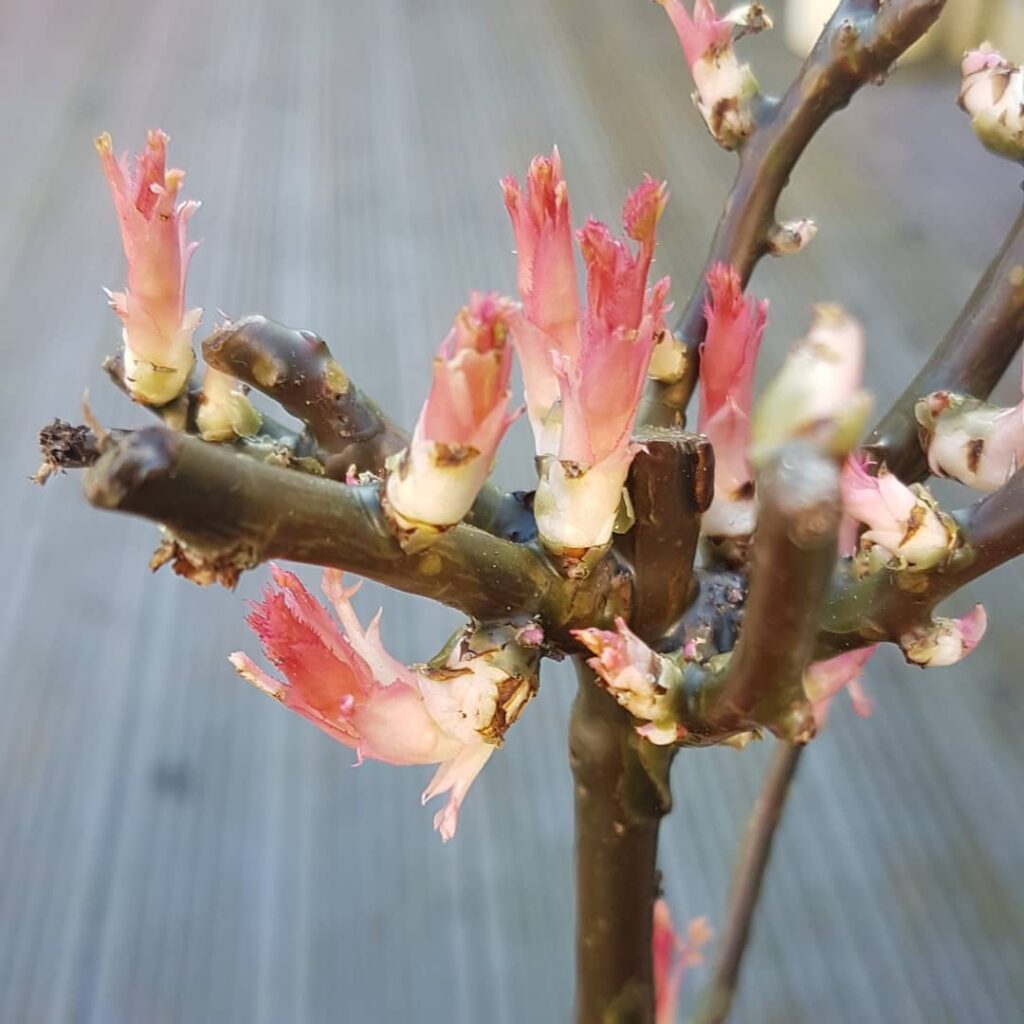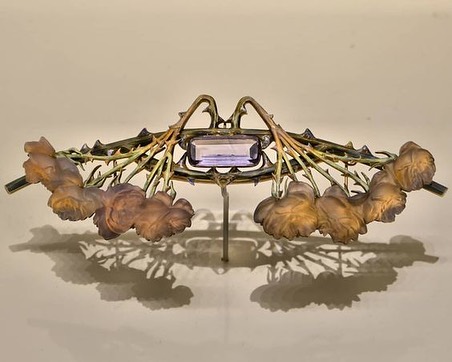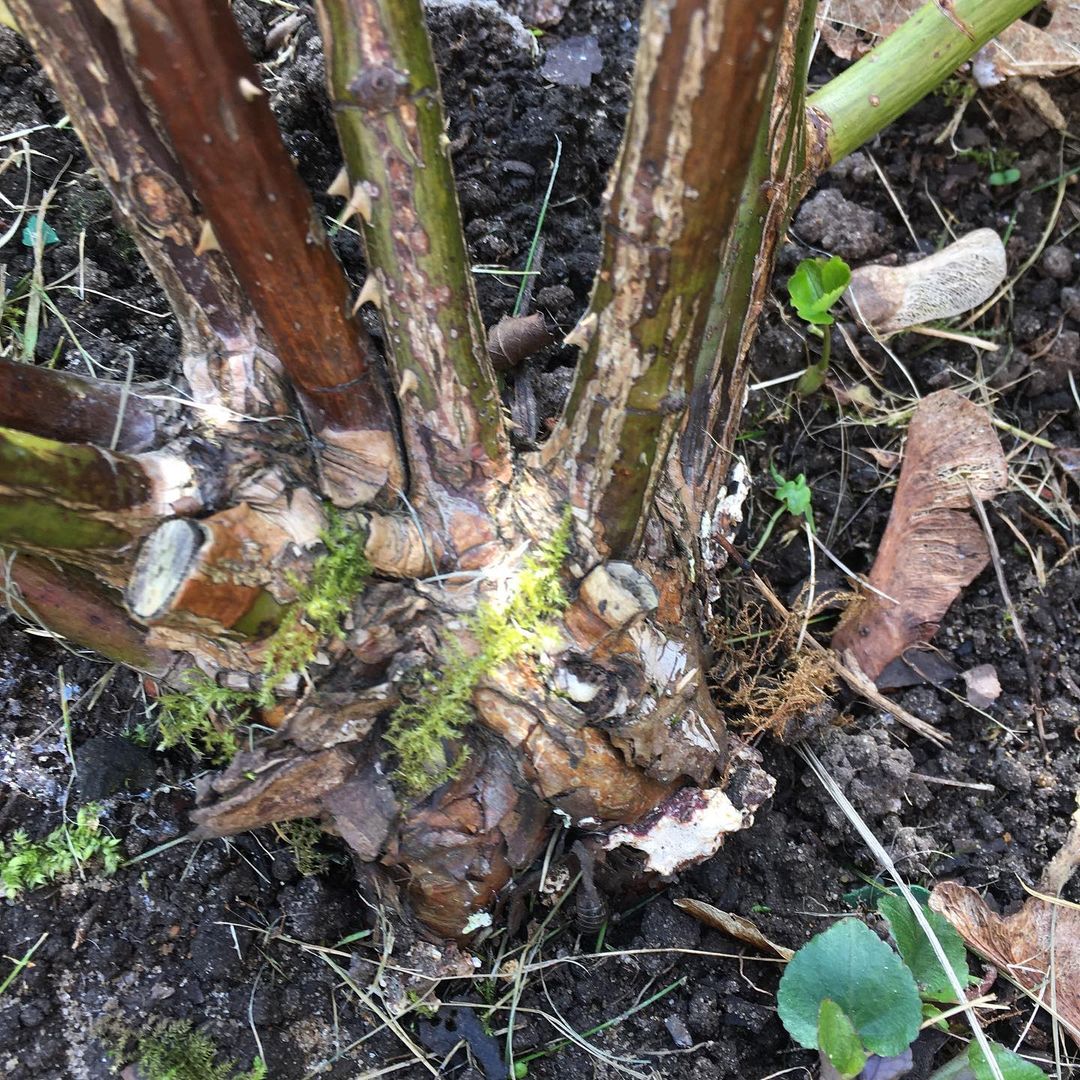Imagine strolling through your garden, admiring the lush, vibrant blooms of your beloved roses, only to notice unsightly, brown lesions marring their beauty. These blemishes signal the presence of a dreaded plant disease: Brown Canker on Roses. This formidable fungal infection can swiftly transform your rose garden into a scene of distress, attacking stems and leaves, causing dieback, and potentially killing your cherished plants.
In this article, we’ll delve into the world of Brown Canker, exploring its causes, identifying symptoms, and, most importantly, offering effective solutions to combat this persistent adversary. Whether you’re a seasoned gardener or a rose enthusiast just starting out, understanding how to prevent and treat Brown Canker is crucial for maintaining the health and splendor of your roses. Prepare to arm yourself with knowledge and strategies to protect your garden’s floral treasures from this pervasive threat.

Brown Canker on Roses: Identification and Care
We’ll discuss the topic step by step. So, bear with us, and let’s dive into it:
Causes of Brown Canker on Roses
Brown Canker on roses is primarily caused by fungal pathogens, particularly Botrytis cinerea and Colletotrichum gloeosporioides, which thrive in moist conditions and can infect plants through various means:
- Weather Conditions: High humidity, prolonged rainfall, and damp environments create optimal conditions for fungal growth.
- Poor Air Circulation: Dense foliage or overcrowded plantings restrict air flow, creating a humid microclimate that encourages fungal development.
- Injury or Wounding: Pruning cuts, insect damage, or mechanical injury provide entry points for fungal spores to invade the plant.
- Contaminated Tools: Using pruning tools that haven’t been sanitized can spread fungal spores from infected plants to healthy ones.
- Overhead Watering: Watering plants from above can splash fungal spores onto leaves and stems, promoting infection.
- Improper Planting Density: Planting roses too closely together reduces air circulation, increasing humidity and fungal risk.
Understanding these causes is crucial for preventing Brown Canker outbreaks. Implementing proper cultural practices and maintaining a vigilant eye for early symptoms can significantly mitigate the risk of infection and preserve the health of your roses.

Symptoms of Brown Canker on Roses
Brown Canker manifests primarily on the stems and foliage of roses, presenting distinct symptoms that gardeners should promptly recognize to mitigate its impact:
1. Stem Lesions:
- Appearance: Initially, small, dark brown spots appear on the stems.
- Progression: These spots develop into larger, sunken lesions.
- Consequence: The canker weakens the stem, leading to dieback and potential death of affected branches.
2. Leaf Damage:
- Symptoms: Brown, irregular lesions form on the leaves.
- Effect: Leaves may curl or distort as the disease progresses.
- Impact: Reduced photosynthesis and overall plant vigor.
3. Twig Dieback:
- Observation: Affected twigs show progressive browning and drying.
- Extent: Dieback can extend from the tips of branches inward toward the main stem.
- Risk: Severe cases may lead to substantial loss of plant tissue and reduced flowering.
4. Spore Production:
- Signs: Infected areas may develop black fungal fruiting bodies (pycnidia) on the surface.
- Spread: These structures release spores, facilitating the disease’s spread to nearby plants.
5. Overall Plant Decline:
- General Health: Plants infected with Brown Canker exhibit overall decline in vigor and growth.
- Long-term Impact: Untreated infections can weaken roses over time, making them more susceptible to other diseases and environmental stresses.
Identifying these symptoms early empowers gardeners to take swift action, implementing appropriate management strategies to protect their roses from the damaging effects of Brown Canker.

How to Treat Brown Canker on Roses?
Brown Canker, caused by the fungus Cryptosporella umbrina, can severely impact the health of roses. Effective treatment involves prompt action and careful management strategies:
1. Pruning Infected Areas
- Purpose: Remove diseased tissue to prevent further spread.
- Method: Use clean, sharp pruning shears to cut at least 5-10 cm below visible lesions.
- Timing: Perform pruning during dry weather to minimize fungal spread through water.
2. Sanitation Practices
- Cleanliness: Remove fallen leaves and debris from around plants to reduce fungal spores.
- Disinfection: Sterilize pruning tools between cuts using a solution of 70% ethanol or a 10% bleach solution.
3. Fungicidal Treatments
- Application: Use fungicides containing active ingredients like copper or mancozeb.
- Timing: Apply according to label instructions, usually starting in early spring or at the first sign of disease.
- Frequency: Repeat applications every 7-14 days as preventative measures during the growing season.
4. Cultural Practices
- Optimal Conditions: Ensure roses are planted in well-draining soil and receive adequate sunlight and air circulation.
- Avoid Overhead Watering: Minimize moisture on foliage to discourage fungal growth.
- Mulching: Apply organic mulch around plants to maintain soil moisture balance and reduce splashing of fungal spores.
5. Monitoring and Vigilance
- Regular Inspections: Check roses frequently for new symptoms of Brown Canker.
- Early Intervention: Act swiftly at the first signs of infection to prevent escalation.
By implementing these targeted strategies, you can effectively manage and mitigate the impact of Brown Canker on your roses, preserving their health and beauty throughout the growing season.

Preventive Measures of Brown Canker on Roses
Brown Canker can be devastating to roses, but proactive measures can significantly reduce its impact. Implement the following strategies to protect your roses:
1. Cultural Practices:
- Planting Distance: Space roses adequately (about 18-24 inches apart) to ensure good air circulation, which reduces humidity and discourages fungal growth.
- Pruning: Regularly prune dead or diseased branches, making clean cuts to prevent the spread of infection.
- Sanitation: Remove and destroy any fallen leaves or debris around roses, as they can harbor fungal spores.
2. Watering Techniques:
- Avoid Overhead Watering: Water at the base of plants to keep foliage dry, minimizing conditions favorable to fungal growth.
- Morning Watering: Water early in the day to allow foliage to dry before evening, reducing prolonged leaf wetness.
3. Fertilization and Soil Management:
- Balanced Nutrition: Ensure roses receive proper nutrients for healthy growth, which improves their ability to resist diseases.
- Mulching: Apply mulch around roses to regulate soil moisture and temperature, promoting overall plant health.
4. Plant Selection:
- Resistant Varieties: Choose rose varieties known for their resistance to fungal diseases like Brown Canker.
- Local Adaptation: Select roses suited to your local climate and growing conditions to enhance their natural defenses.
By incorporating these preventive measures into your rose care routine, you can significantly reduce the risk of Brown Canker and enjoy healthier, more resilient plants in your garden.
Frequently Asked Questions
What are the common symptoms of Brown Canker on roses?
Brown Canker typically manifests as dark brown lesions on rose stems and leaves. These lesions may appear sunken and can cause dieback of affected parts. Early signs include discoloration and wilting of leaves near the lesions.
How does Brown Canker affect the health of roses?
Brown Canker weakens roses by compromising their vascular systems, hindering nutrient transport. This can lead to stunted growth, reduced flowering, and even plant death if left untreated. Prompt identification and management are crucial to minimize damage and preserve plant health.
What causes Brown Canker to develop on roses?
Brown Canker is primarily caused by fungal pathogens, often thriving in humid conditions. Poor air circulation around plants, crowded foliage, and wounds from pruning or pest damage create ideal environments for infection. Proper cultural practices and vigilant monitoring can help prevent its spread.
How can I treat and prevent Brown Canker in my rose garden?
Treatment involves pruning affected areas back to healthy tissue, ensuring sterilized tools to prevent spreading the fungus. Applying fungicides labeled for rose diseases can help control outbreaks. Preventive measures include promoting good air circulation, avoiding overhead watering, and maintaining plant health through proper pruning and fertilization practices.
Conclusion
In conclusion, Brown Canker poses a significant threat to the health and beauty of roses, causing dark lesions that can lead to severe damage if left unchecked. Vigilant monitoring for early symptoms, prompt pruning of affected parts, and strategic use of fungicides are essential for managing this fungal disease.
Additionally, adopting good cultural practices such as proper spacing, adequate air circulation, and careful watering can greatly reduce the risk of infection. By integrating these strategies into your gardening routine, you can safeguard your roses and enjoy a flourishing garden filled with vibrant, healthy blooms year-round.

I’m Shofi, a passionate gardener and blogger. I have 10+ years of experience in gardening and hold certifications in horticulture and garden design. I share my knowledge and skills through my garden blog to inspire and educate others on the joys of gardening. I try to provide valuable information and create a community for gardeners of all levels to connect and learn. My ultimate goal is to inspire others to start their own gardens and connect with nature.

